Paris is a city full of surprises that we never finish exploring! Among its hidden wonders, I present to you today the Cité Napoléon in the 9th arrondissement. In front of the rather banal porch of 58 rue de Rochechouart, it’s hard to imagine the surprising architecture that lies behind. However, if your curiosity drives you to push open the door, you will probably be surprised! It is in fact a former workers’ housing estate built under Louis-Napoléon Bonaparte.
What is the history of the Cité Napoléon? What can you see there? Visit this unusual and particularly charming place!
The industrial upheaval of the 19th century
At the beginning of the 19th century, the city of Paris experienced a real industrial upheaval. The arrival of new energy sources and new techniques led to a profound demographic upheaval. Between 1830 and 1849, the number of steam engines increased from 130 to 1,200, a growth that was accompanied by a demographic boom as the population of Paris leapt with the arrival of many workers: from 400,000 inhabitants in 1845, there were 1 million in 1848!
This is how a hydrogen gas factory was created in the north of the 9th arrondissement, not far from the Fermiers généraux enclosure.
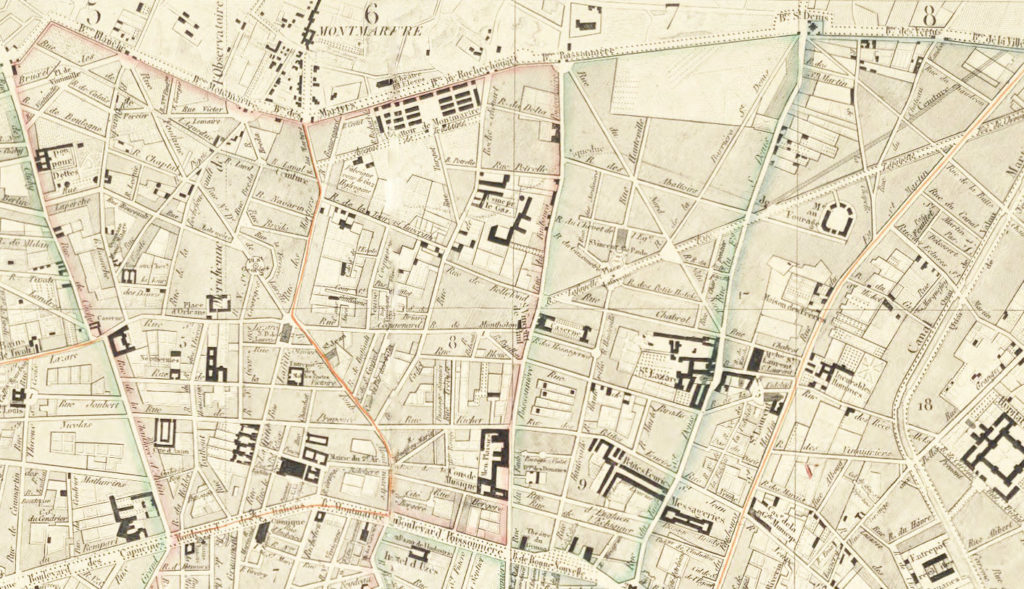
But this demographic explosion led to public health problems: the difficult living conditions, the poverty of this working class and the lack of housing encouraged the development of cholera.
A working-class city in the heart of Paris
As early as 1844, Louis-Napoléon Bonaparte took an interest in social issues and published an essay entitled “De l’Extinction du paupérisme”. When he came to power in 1848 during the first election to universal suffrage, he wanted to build in each district of Paris “a familistère large enough to house about four hundred workers’ families, each of whom would have a separate flat and to whom the consumer system would have ensured on a large scale, in terms of food, rent, heating and lighting, the benefit of the savings resulting from the association”.
The Cité Napoléon was thus created in 1849 to house the district’s working-class population. The work was completed four years later and 200 families moved in, with rents ranging from 100 francs for a room without a fireplace to 300 francs for larger units with bedrooms and a kitchen. The tenants could also benefit from several free services: toilets at the ends of the landings, a crèche, a free visit from a doctor, a laundry and a drying room.
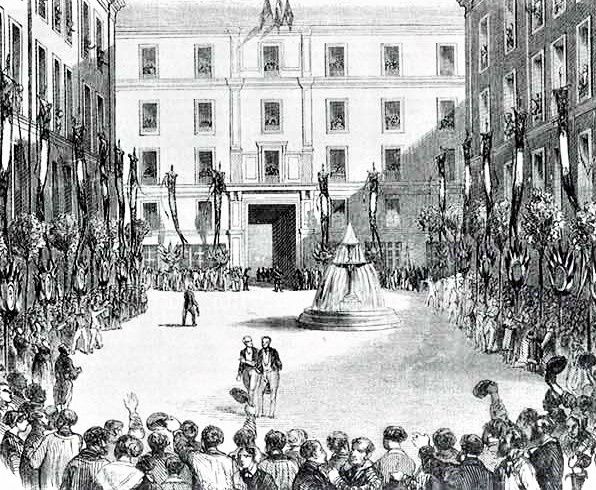
However, the Cité Napoléon did not only have a philanthropic objective: it also had the function of controlling a dangerous population in a closed area in case of insurrection, but also to limit problems related to alcoholism or gambling. Thus, very strict rules were imposed, such as the presence of an inspector to monitor the behaviour of the inhabitants or the establishment of a curfew with the gates closed at 10 pm. These rules were so restrictive that the Cité was not as successful as expected: an engineer wrote in 1867, “This complex is satisfactory from the point of view of general cleanliness and health, but its appearance is too reminiscent of a barracks, a hospital or a cloister. The experiment was therefore not repeated in the other districts.
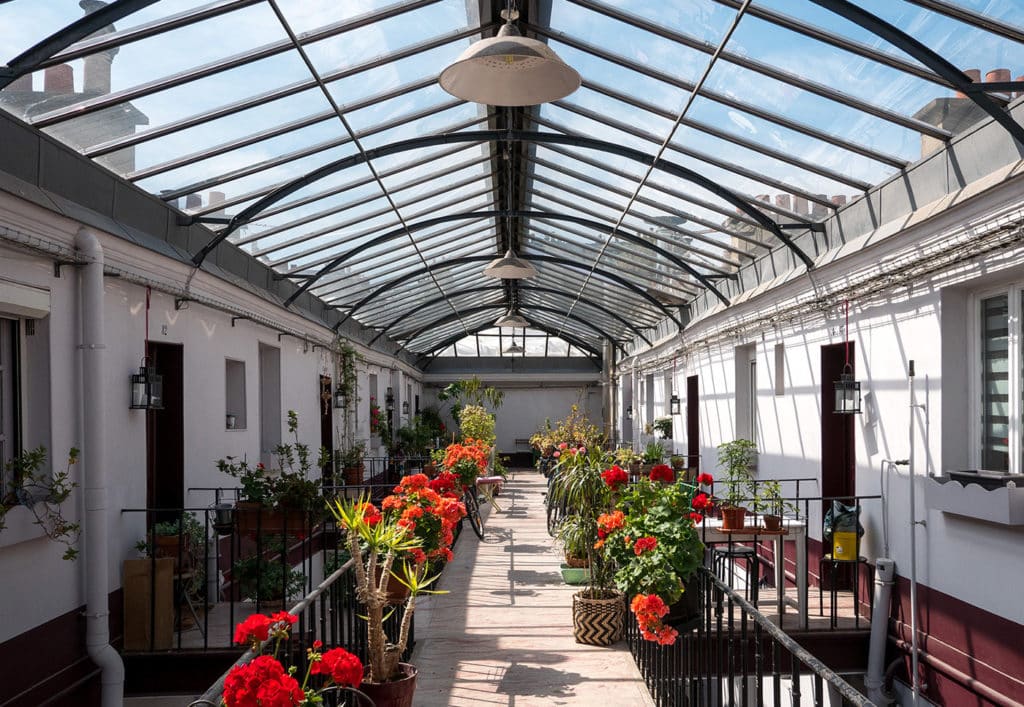
Visit of the Cité Napoléon
Today, of course, these rules no longer apply and rents are certainly not the same! The Cité Napoléon offers an original and timeless living environment. If you pass by 58 rue Rochechouart, I can only invite you to take a look at this very special architecture.
Around an entrance hallway, two large staircases lead to passageways around which the dwellings follow one another on several floors. In front of each dwelling, a small landing allows each person to store his or her bicycle or to set up a small table.
On the top floor, it’s the “wow” effect: a glass roof offers a warm (sometimes too warm in the middle of a heat wave!) and luminous setting from which the residents can enjoy some gardeners, giving a particularly charming bucolic character.
ALSO READ: The little-know history of the Montmartre Sacré-Cœur Basilica in Paris

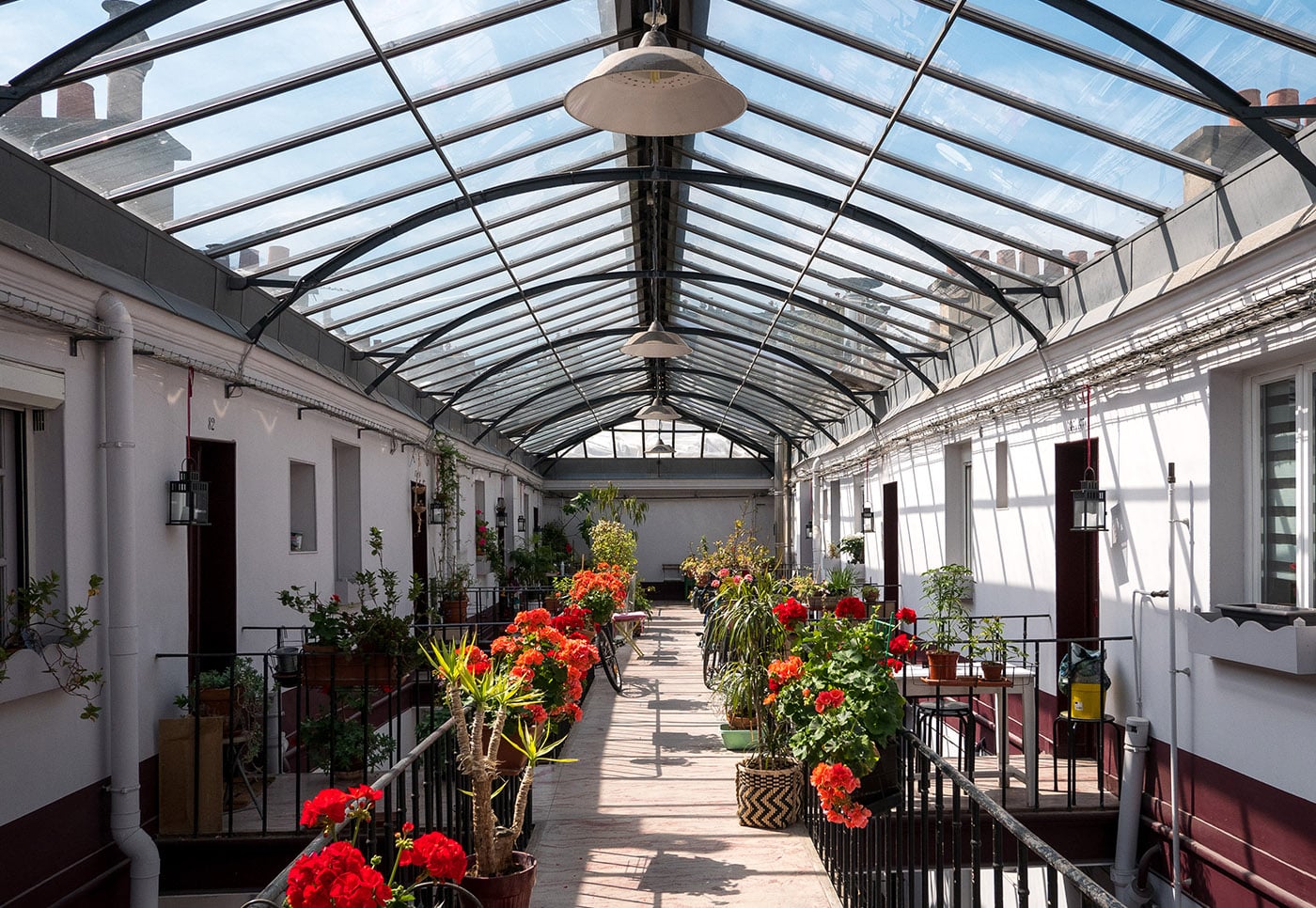

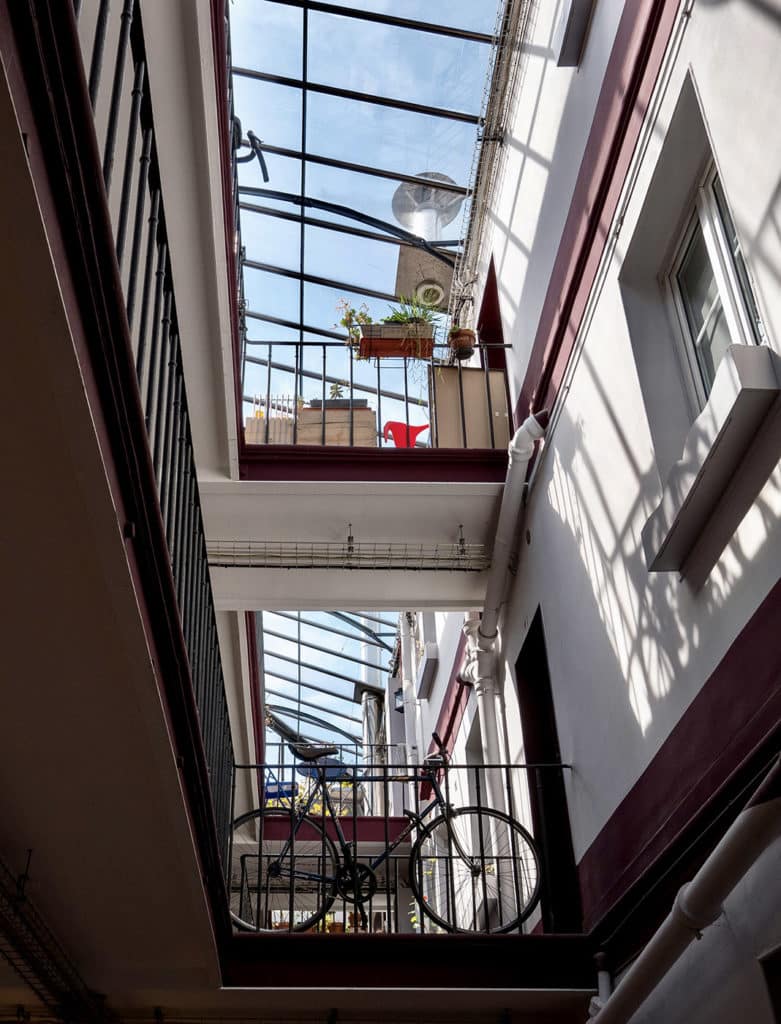
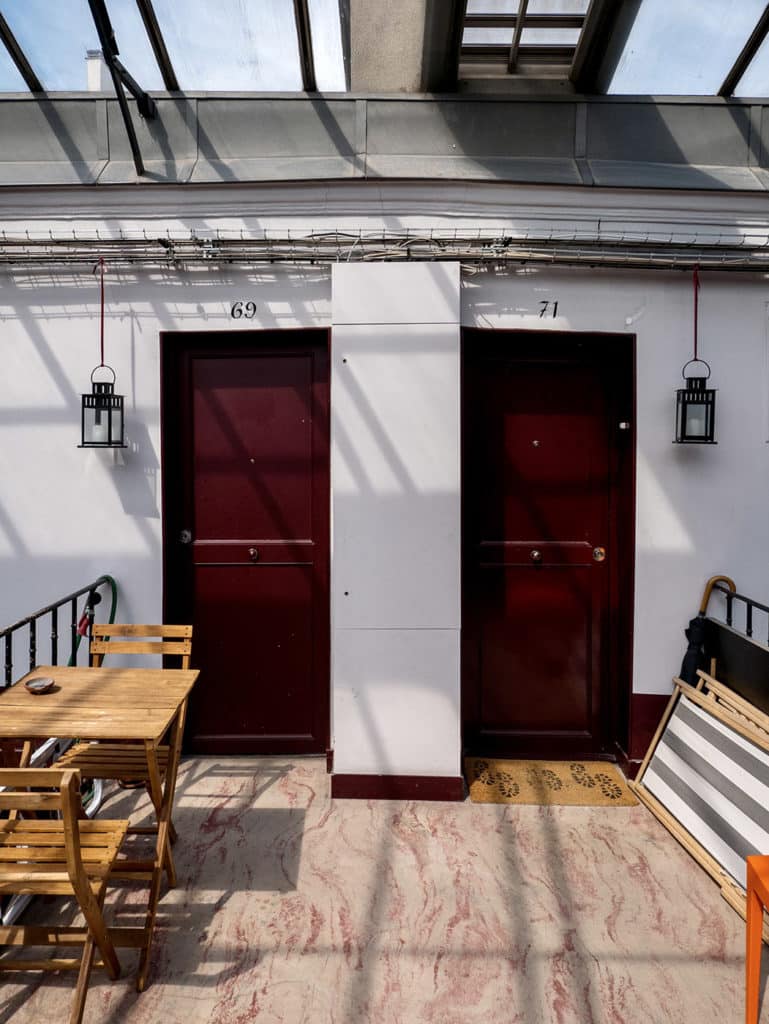

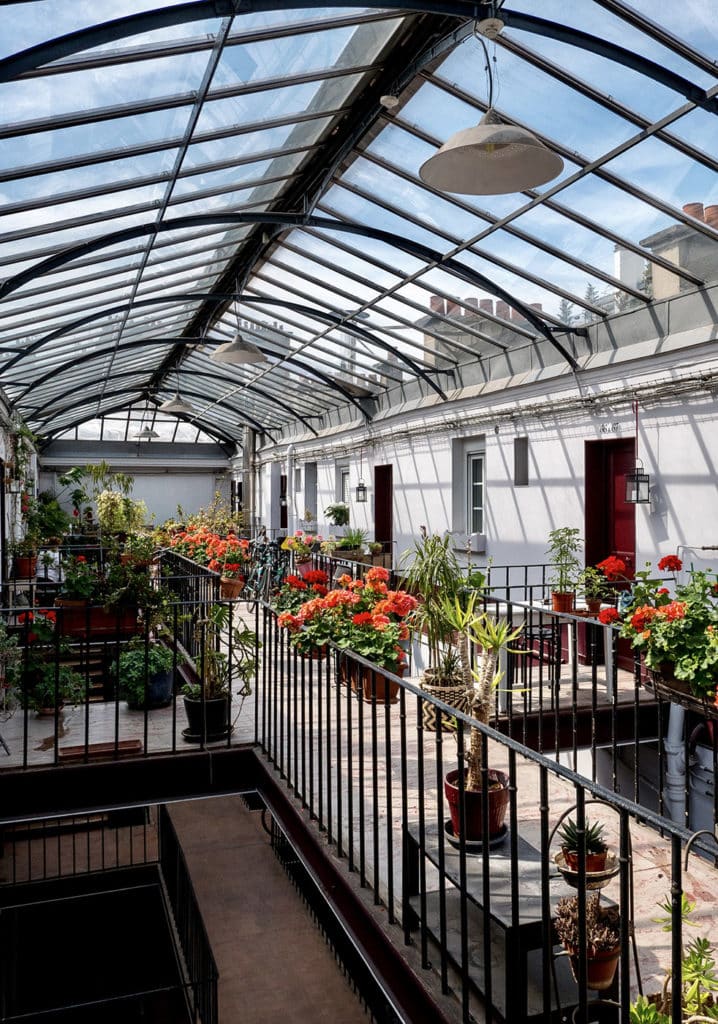
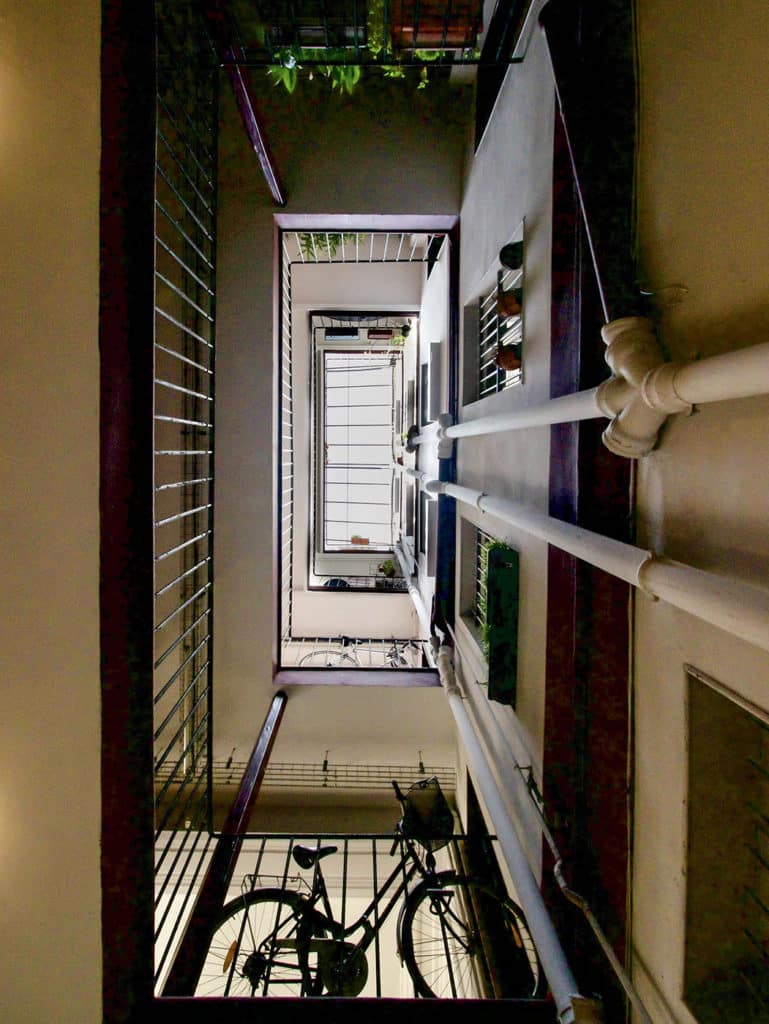
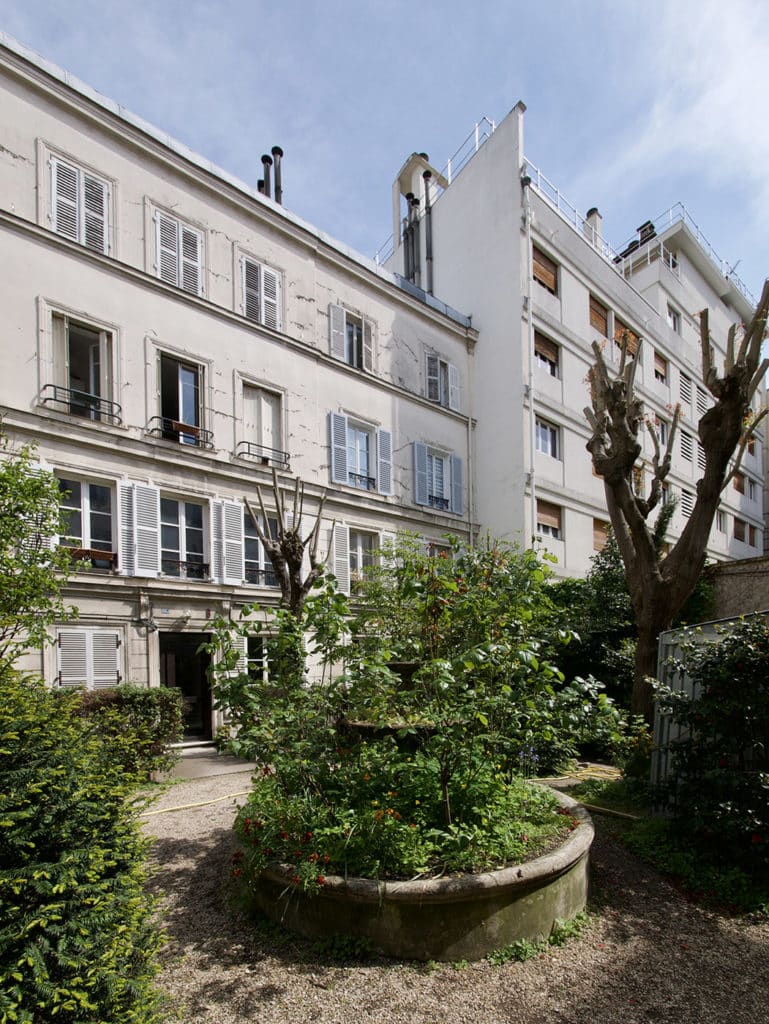


No Comments
Leave a comment Cancel